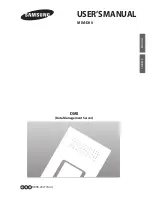
158
batch file:
A file, ending with a .bat extension, containing MS-DOS commands that you
can perform together, rather than typing them one at a time. Batch files are
useful if you have a series of MS-DOS commands that you need to type fairly
often. For example, you could use a batch file for the commands needed to log
on to a network. See also
autoexec.bat
.
baud (baud rate):
The speed at which communication devices, such as printers,
terminals, and modems, transmit information. Information travels as a series of
electronic signals. The baud rate measures the rate of change in these
signals. This is not necessarily the same as bits per second, although the two
are related. It is named for Emil Baudot, a pioneer in printing telegraphy. See
also
bits per second
.
binary:
The base-two number system, in which the only digits are 0 and 1. This system is
used in computers since it can be implemented as a series of electronic
signals that are either off (0) or on (1). From right to left, the digits in a binary
number have the values 1 2 4 8 16 and so on. For example, the binary
number 101 is equivalent to the decimal number 5. If you need to convert
numbers from binary to decimal or vice versa, many pocket calculators and
calculation programs can do the work for you. See also
decimal
.
bit:
A binary digit.
The basic unit of information used by the computer, a bit may be either
1 or 0. While an individual bit cannot contain a significant amount of
information, by combining bits into larger units, such as bytes (a group of eight
connected bits), your computer can deal with huge blocks of data. See also
byte
.
bitmap:
A graphic composed of dots or pixels. It is usually created by a drawing package,
a screen capture utility or a scanner.
bits per second (BPS):
A way of measuring the speed at which information is passed
between two devices. This is the basic measure used in modem
communications. This is similar, but not identical, to the baud rate. See also
baud
.















































